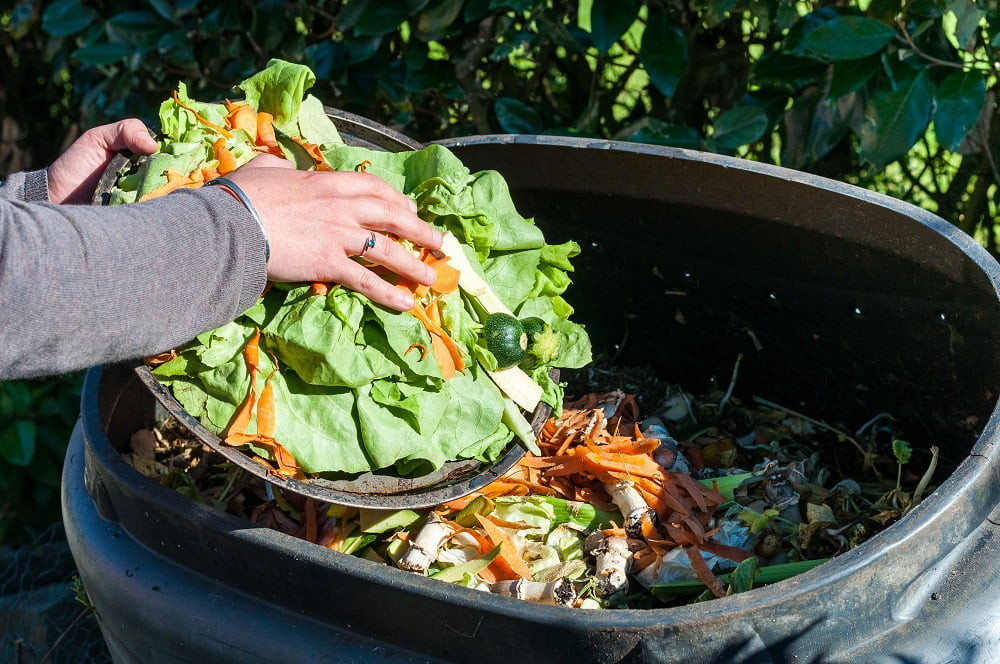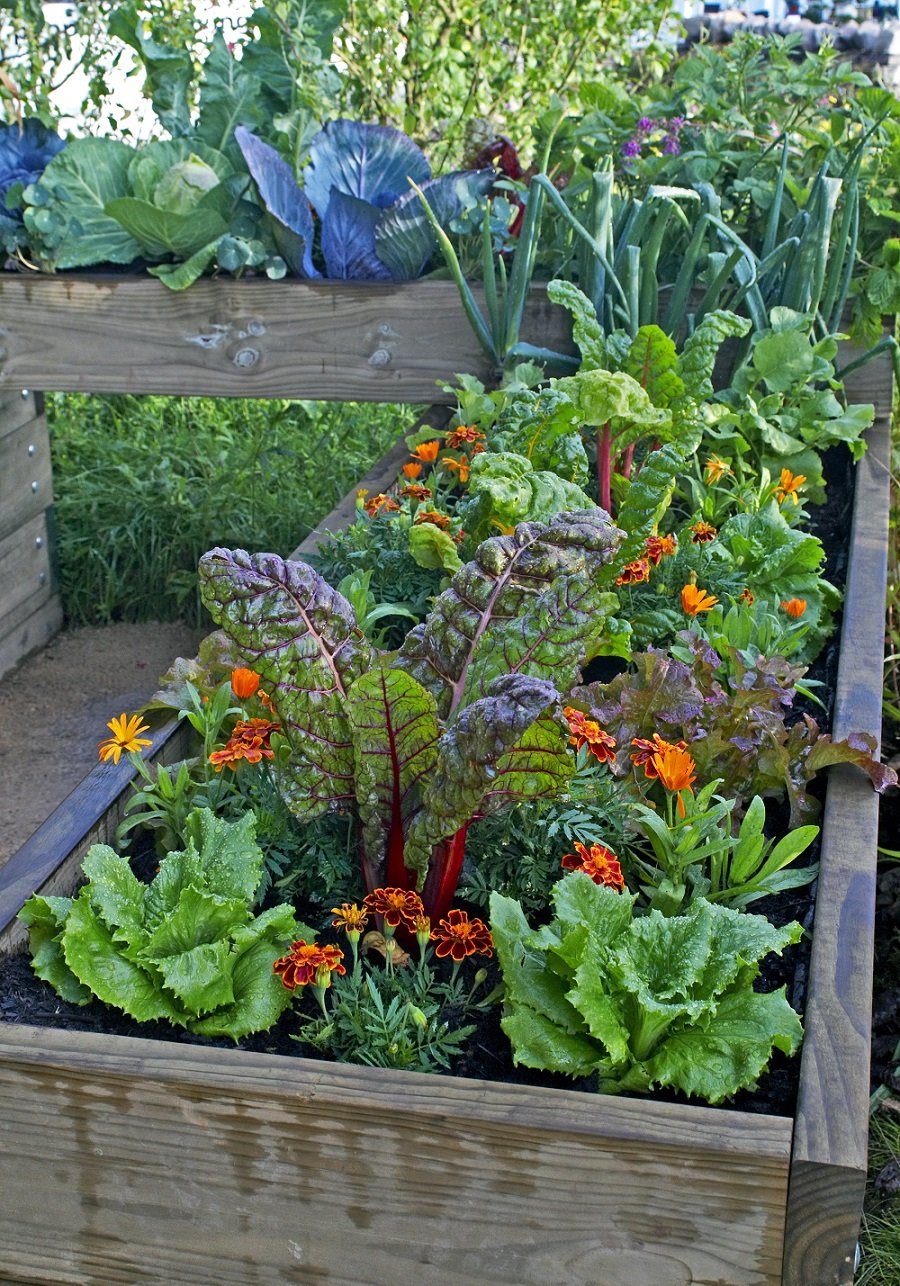Favourite Gluten-Free Items Available at Spud May National Celiac Awareness Month, but every day Spud…
If you want to get serious about reducing food waste, you’ve got be serious about composting. Sure, you help out by participating in your municipality’s food scraps collection program, but if you’re really ready to roll up your sleeves for the environment (and your garden), it’s time to bring the decomposing party to your own backyard.
Many people get scared off by the idea of backyard composting because they anticipate seriously unrealistic worst case scenarios. They fear their backyard will become the trendiest new hangout for raccoons, or that they’ll be labelled as the ‘smelly’ neighbours, or that by even considering backyard composting, they’re basically signing up for a fruit-fly-pocalypse. But as long you dedicate the time and energy a backyard compost system needs (it’s not that much), all you’ll be tending to will be your healthy, luscious plants who’ll be benefitting from this nutrient rich soil.
In fact, not only will compost add the nutrition your garden needs to flourish and thrive, it will help divert food waste away from the landfill, and repurpose it in such a way that won’t contribute to methane emissions. So this combines diverting organic waste from the landfill, reducing emissions, healthier soil, saving money on gardening supplies, and a cool new hobby! What’re you waiting for?
How does composting work?
Composting is nature’s way of recycling decomposed organic materials into a rich soil that gardeners fondly call ‘Black Gold’ because of its nourishing effect on soil. Compost is incredible for gardens because it’s absolutely packed with nutrients that help feed your soil. And as we are beginning to realize, healthy soil is what allows us to reduce emissions, use less pesticides, and promote biodiversity. Trust me, your garden wants some o’ this.
How does compost benefit your garden?
Compost supports the soil food web, which includes microscopic bacteria, fungi, earthworms, and other little critters. When compost gets introduced into a garden, it makes it easier for things living in that garden, notably the plants, to feed themselves more efficiently. It also helps your plants stay strong and defensive against diseases, improves flavour and nutrition, and helps soil to retain moisture.
How does composting help the environment?
Right now, about 20% of Canada’s methane (a potent greenhouse gas) emissions come from landfills. But about 40% of what ends up at the landfill is actually organic matter that could have been composted. When organic material has to decompose in a landfill without access to oxygen, it creates methane. But when we compost, organic waste is able to decompose naturally and be transformed into something that we can use again. Long story short, composting is one of the easiest ways to reduce your personal environmental footprint.

So now that you know exactly why you should home compost, here’s how:
Step 1: Choose a compost bin.
You can buy commercial compost bins at most hardware stores, and you can also find them online. Certain municipalities will even give them away for free!
Step 2: Separate your greens and browns.
You can separate the types of materials you’re going to feed your compost into green materials, and brown materials. As you get into the habit of ‘feeding’ your compost, you’ll want to rotate between 50% green and 50% brown.
Green materials include: Vegetable and fruit scraps. Coffee grounds and filters. Tea bags and leaves. Fresh grass clippings. Plant trimmings from your garden. Houseplants.
Cut food scraps into smaller pieces for quicker decomposition, and place them in your kitchen food scrap bin. Find something with a tight fitting lid to keep the fruit flies out. You can also store food scraps in the freezer.
Brown materials include: Dry leaves. Straw and dry hay. Woodchips and sawdust from untreated wood. Dried grass clippings. Egg and nut shells. Hair and animal fur. Paper, shredded newspaper (non-toxic) paper towels, and paper tubes.
Collect dry leaves and grass in a seperate, dry container—this way you’re stocked with brown materials year round.
Never include: Meat. Fish. Eggs. Dairy products. Bread products, rice or pasta. Oily foods or grease. Bones. Cat and dog waste. Diseased plants and seeds of weedy plants. Anything treated with pesticides.
*Sometimes these items are allowed to be included in food scrap collection programs, but they will only harm the health of your garden, and encourage pests to start rifling through your compost bin.
Step 3: Start feeding your compost.
- Find a flat, partially shaded place with good water drainage for your bin. Place it about 30 cm away from any walls, windows, fences, bushes, doors, or windows.
- Whenever you dump a food layer into the bin (green), top it with a layer of brown.
- Make sure to give your compost a good mixing every one or two weeks to let it breathe, and don’t let the bin get so full that there’s no oxygen inside.
- After about 3 months, your compost should be ready to use.
Step 4: How to use compost in your garden.
You can rake compost over your grass, spread it around the shrubs, trees, and flowers in your yard, or dig it into the soil of your vegetable beds before plantings.
Troubleshooting:
- If the pile seems overly wet and absolutely reeks, you’ve got too many greens. Add more brown materials. Try to move the green materials into the middle and give everything a good stir.
- If your compost is dryer than the Sahara and there ain’t no way it’s gonna support your plants, you’ve got too many browns. Add more kitchen scraps and some water to moisten the pile.
- If the pests keep coming, and they don’t stop coming, you’ve probably allowed some of the banned ingredients into your compost pile, and/or are using a bin with insufficient coverage. Start using a bin that’s specifically pest resistant, and be strict about not letting grease, oils, meats, or breads into your compost.
- If the fruit flies are swarming, move the green materials (kitchen scraps) to the centre of the bin, then surround and cover them with brown materials.
Have you tried backyard composting before? We’d love to hear about your successes, trials and tribulations in the comments!
.





